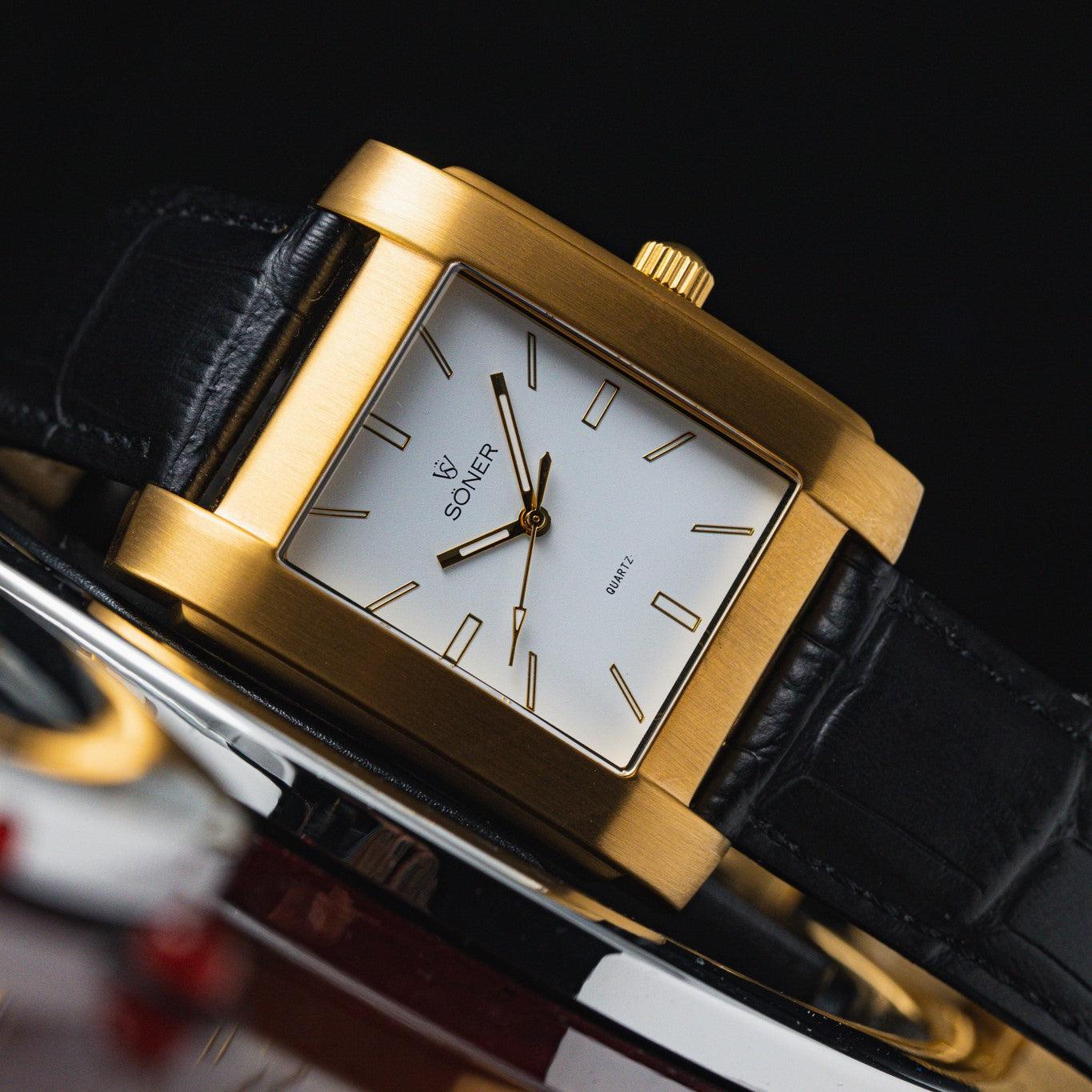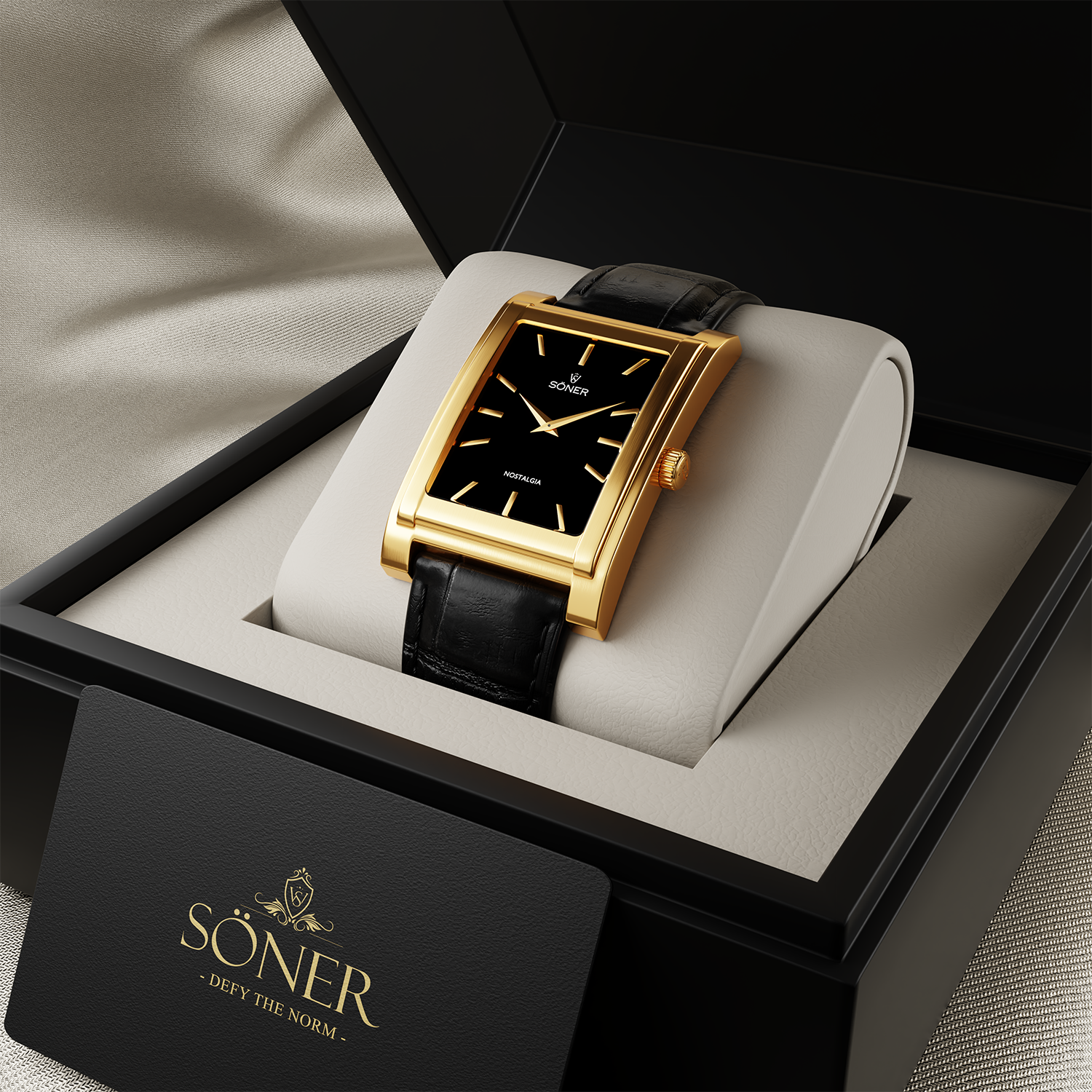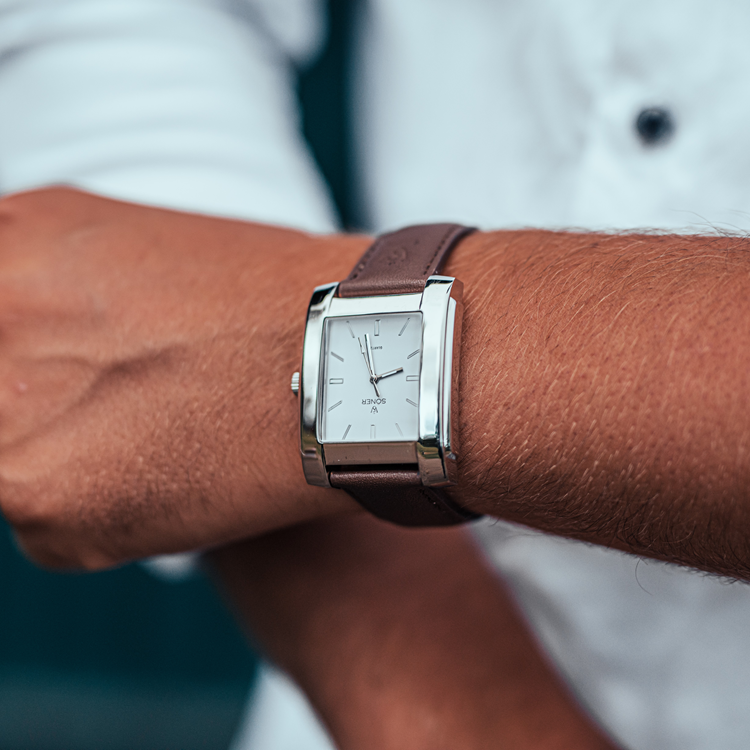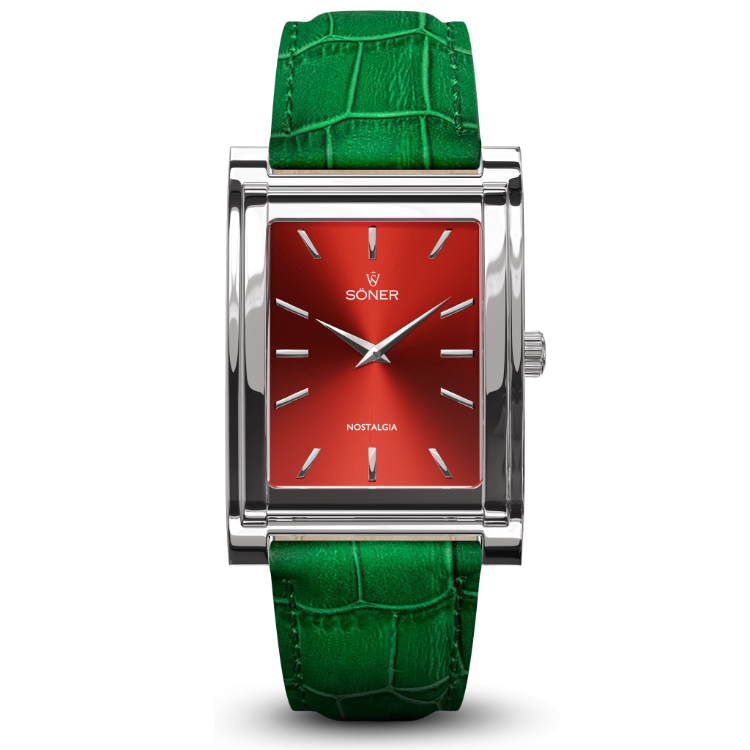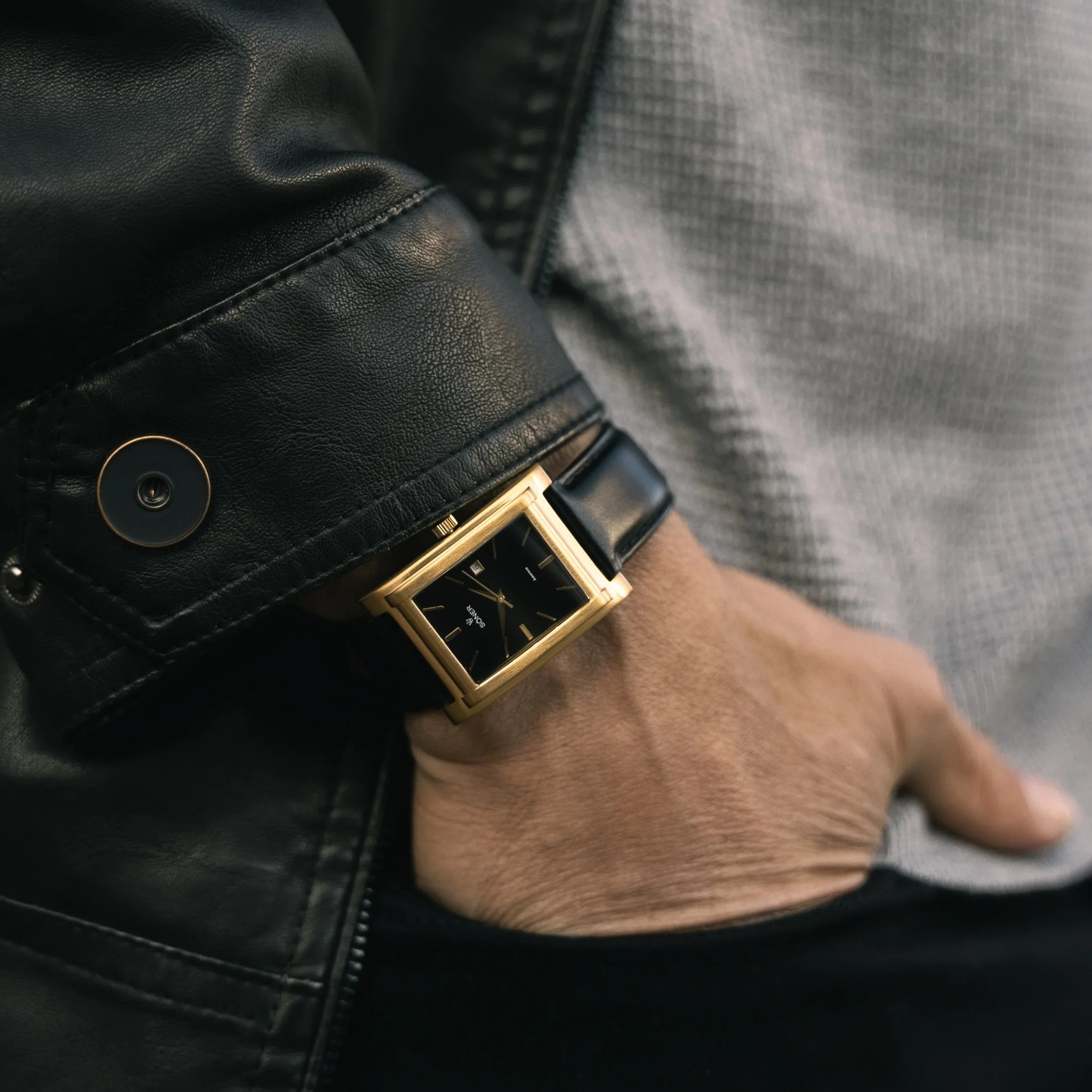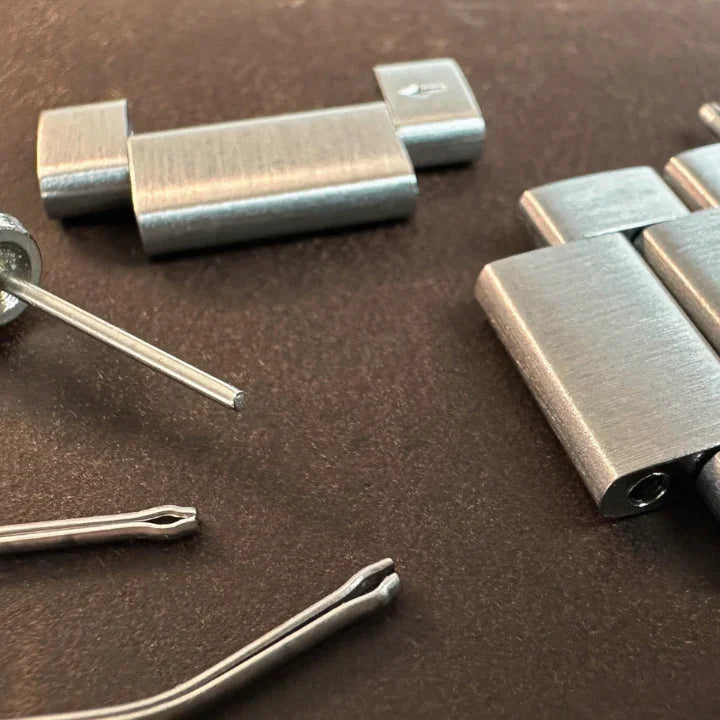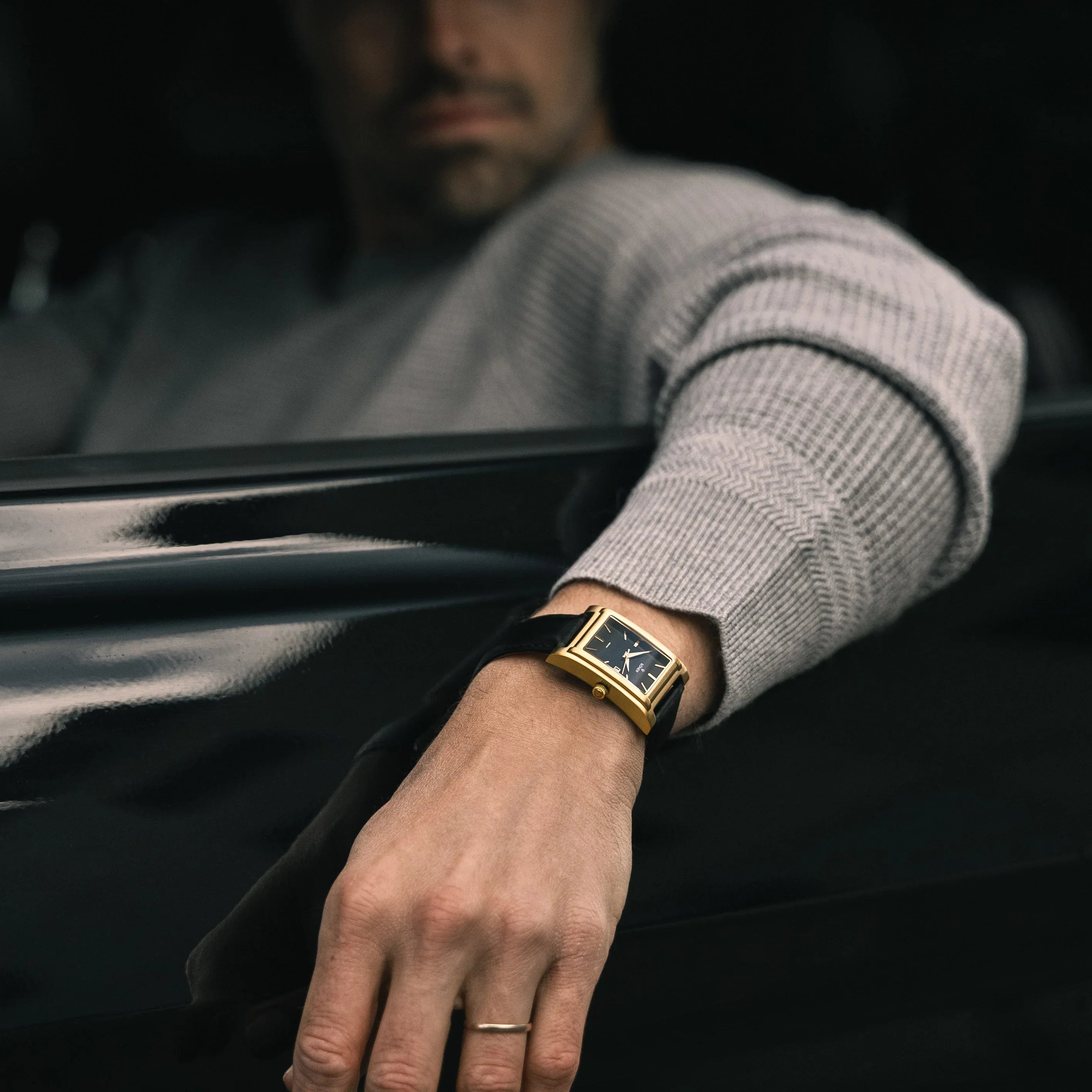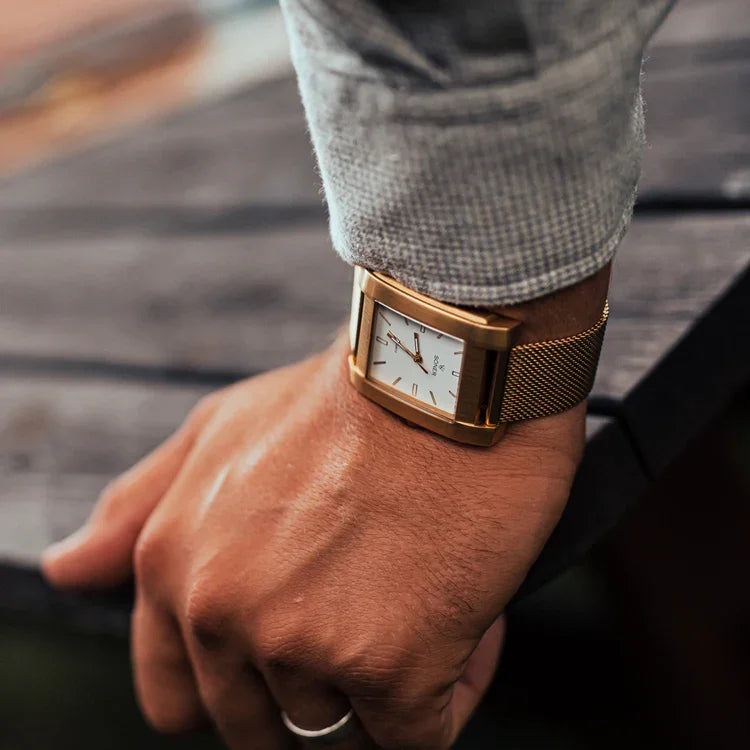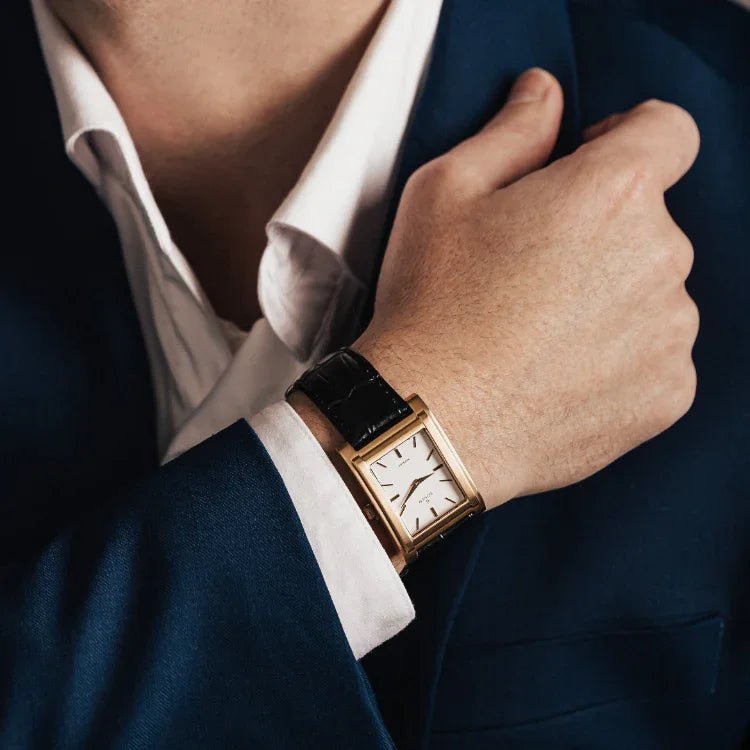Table of Contents
Ultimate Guide PVD Gold
PVD coating, also known as Physical Vapor Deposition, is a fascinating process that has revolutionized the watchmaking industry. In this comprehensive guide, we will demystify the concept of PVD coating, explore its various applications, and delve into the reasons why it has become the go-to choice for watch enthusiasts around the world. So, let's dive in and understand the science, process, superiority, durability and maintenance required for PVD-coated watches.

Demystifying PVD Coating
PVD coating is a technique used to apply a thin film of material onto the surface of a watch. This thin film is created through the process of physical vapor deposition, in which a solid material is vaporized and then condensed onto the watch surface. By doing so, a protective layer is formed that enhances the watch’s performance and appearance.

Understanding the Science Behind PVD Coating
The science behind PVD coating lies in the interaction between high-energy ions and the watch surface. These ions bombard the surface, causing the atoms to be displaced and rearranged. This results in the formation of a dense and highly adherent coating that provides excellent protection against wear, scratches, and corrosion.
Furthermore, the process of physical vapor deposition involves multiple steps, including cleaning the substrate surface to ensure proper adhesion, heating the substrate to promote film growth, and controlling the deposition rate to achieve the desired thickness. These precise steps are crucial in producing a high-quality PVD coating that meets the stringent requirements of the watch industry.
Common Applications of PVD Coating
PVD coating is widely used in the watch industry due to its versatility and durability. It is commonly applied to watch cases, bracelets, and clasps, providing them with a sleek and stylish appearance that lasts for years. Additionally, PVD coating can also be used to enhance the functionality of watch components, such as adding lubricity to reduce friction.
Moreover, the benefits of PVD coating extend beyond the watch industry. This innovative technology is also utilized in automotive applications to improve the wear resistance of engine components, in the medical field to create biocompatible surfaces for implants, and even in the aerospace sector to enhance the performance of aircraft parts. The versatility of PVD coating makes it a valuable solution in various industries where protection, aesthetics, and functionality are paramount.
The Process of PVD-Coating Watches
The process of PVD-coating watches is a fascinating and intricate procedure that involves several techniques and steps. Let's delve deeper into the world of PVD-coating watches:
Techniques Used in PVD-Coating Watch Components
When it comes to PVD coating, there are three main techniques that are commonly used to achieve the desired results. Sputtering, the first technique, involves bombarding a target material with high-energy ions, causing the release of atoms that then settle on the watch surface, creating a durable and protective coating. Arc evaporation, the second technique, utilizes an electric arc to vaporize the target material, which is then deposited on the watch through the same ion bombardment process, ensuring a uniform and long-lasting coating. Lastly, electron beam evaporation, similar to arc evaporation, uses an electron beam instead of an electric arc to achieve the desired coating, showcasing the versatility and precision of PVD-coating technology.

Each of these techniques plays a crucial role in the PVD-coating process, ensuring that the watch components are not only aesthetically pleasing but also durable and resistant to everyday wear and tear.
Benefits of PVD-Coated Watches
Owning a PVD-coated watch comes with a myriad of benefits that cater to both style and functionality. Firstly, the coating provides exceptional scratch resistance, ensuring that your watch remains pristine and free from unsightly marks, even after prolonged use. Additionally, PVD-coated watches boast high resistance to corrosion and fading, making them the perfect accessory for individuals leading active lifestyles or working in diverse environments where exposure to various elements is inevitable. Furthermore, the coating enhances the watch's aesthetic appeal, giving it a sleek and modern look that is sure to turn heads and elevate your style game to new heights.
Exploring the Superiority of PVD Coating
PVD (Physical Vapor Deposition) coating has proven to be superior to traditional coatings in many aspects. Let's take a closer look:
Why PVD Coating Outperforms Traditional Coatings
One of the main reasons PVD coating outperforms traditional coatings is its exceptional adhesion. The ion bombardment during the coating process ensures that the coating adheres firmly to the watch surface, preventing peeling or flaking over time. Additionally, PVD coating provides better abrasion resistance and durability compared to conventional coatings, keeping your watch looking pristine for longer.
Moreover, PVD coating offers a wide range of color options, allowing for greater customization and personalization. This versatility in color choices gives watch manufacturers the ability to create unique and eye-catching designs that cater to diverse consumer preferences. Whether you prefer classic silver tones or bold, vibrant hues, PVD coating can transform the look of a watch to suit your style.
The Environmental Impact of PVD Coating
PVD coating is also considered more environmentally friendly than traditional coating methods. The process is carried out in a vacuum environment, eliminating the need for harmful chemicals that are typically used in other coating techniques. This reduces the carbon footprint associated with watch manufacturing and ensures a cleaner and greener production process.
Furthermore, the durability of PVD coatings means that watches require less frequent maintenance and replacement, contributing to a reduction in overall waste. By choosing PVD coating for your timepiece, you are not only investing in a high-quality and long-lasting product but also making a sustainable choice that aligns with eco-conscious practices.
The Durability of PVD Coating Unveiled
One of the key factors that determine the longevity of PVD coating is the quality of the coating itself. Here are some important considerations:
Key Factors Influencing the Longevity of PVD Coating
The quality of the PVD coating is influenced by factors such as the type of target material used, the process parameters, and the skill of the technician performing the coating. It is crucial to choose a reputable watch manufacturer that uses high-quality PVD coatings and has a track record of producing durable and long-lasting watches.
Furthermore, the thickness of the PVD coating also plays a significant role in its durability. A thicker coating generally provides better protection against wear and corrosion, enhancing the lifespan of the watch. Manufacturers often specify the thickness of the PVD coating applied to their gold watches, giving consumers valuable information about the expected durability of the timepiece.
Understanding the Expected Lifespan of PVD Coating
The expected lifespan of PVD coating on watches can vary depending on factors such as the wearer's usage habits and the environment in which the watch is worn. However, with proper care and maintenance, a PVD-coated watch can retain its beauty and functionality for many years. Regular cleaning and avoiding harsh chemicals or abrasive materials are essential to preserving the integrity of the coating.
In addition to external factors, the design of the watch itself can impact the longevity of the PVD coating. Watches with intricate designs or sharp edges may be more prone to scratches and wear, potentially affecting the durability of the coating. Choosing a watch with a well-crafted design that minimizes areas of high friction can help prolong the life of the PVD coating, ensuring that your timepiece remains a timeless accessory for years to come.
Caring for PVD-Coated Items
To ensure the longevity of your PVD-coated items, it is important to follow these essential maintenance tips:
Essential Maintenance Tips for PVD-Coated Surfaces
- Clean the surface regularly using a soft cloth or microfiber cloth to remove dirt and fingerprints.
- Avoid using harsh chemicals, solvents, or abrasive materials that could damage the coating.
- Keep the gold watch away from extreme temperatures, as this can affect the integrity of the coating.
- Store the watch in a protective case or box when not in use, to avoid accidental scratches or damage.
- Avoid exposing the watch to prolonged sunlight, as this can cause fading or discoloration of the coating.
Protecting PVD Coating from Damage
It is important to protect the PVD coating from potential sources of damage. Be cautious when wearing the watch during activities that may cause impact or scratches, such as sports or manual labor. Additionally, avoid wearing the watch alongside other accessories that could potentially scratch the coating, such as metal bracelets or rough fabrics.
In conclusion, PVD coating has revolutionized the world of watches, providing enhanced durability, functionality, and aesthetic appeal. Its unique process, superior performance, and low environmental impact make it the coating of choice for watch enthusiasts and manufacturers alike. By following proper care and maintenance practices, you can ensure that your PVD-coated watch retains its beauty and functionality for years to come.
Embrace the exceptional with Söner Watches, where our passion for innovation meets your desire for distinction. As the only brand in the world dedicated to crafting exclusively analog square watches, we invite you to explore our collections and join a community that values uniqueness and quality. Whether it's a day at the office or a night out, a Söner watch is more than an accessory—it's a statement of individuality. Discover our gold watch collection today and experience the perfect blend of form, function, and PVD-coated durability that sets us apart.

